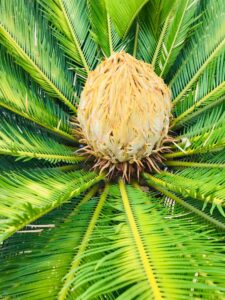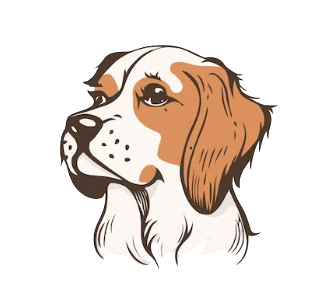Summery :
- Why Cycas is dangerous for dogs
- What is Cycas?
- Which parts of the cycad are poisonous to dogs?
- Symptoms of Cycas Poisoning in Dogs: How to Recognize Them
- What to do if the dog eats Cycas?
- Treatment for Cycas Poisoning
- Is the Cycas plant dangerous for humans?
- Heart murmur in puppies, what are the causes?
1- Why Cycas is dangerous for dogs
Few people know this and every year, especially during spring and summer, many pet owners face what can be a real tragedy: discovering how poisonous and dangerous Cycas is for dogs . What seems like a very normal plant can turn out to be a merciless trap for pets, who, due to their curiosity, could ingest several parts of it.
Before finding out more about the topic and seeing all the damage it can cause, how to cause it and how to intervene, we remind you that you can also join our Whatsapp channel for updates and insights on the world of animals, health and well-being and the Instagram profile of MypersonalPet , unmissable for animal lovers.
2- What is Cycas?
Cycas, common name of Cycas revoluta , is also known as Sago palm and is an evergreen plant native to Asia, Africa and Oceania, now abundantly present in Europe, especially in public and private gardens.
Very easy to maintain and resistant, it resembles a harmless dwarf palm and is widely used in Western gardens as an ornament . Although in its countries of origin this plant is also used as food (always after cooking), it is highly toxic and for our dogs it is a real threat.
It should be noted that there are also so-called innocent murmurs , of a benign nature , which occur as a result of very rapid blood flow within the heart chambers; generally, innocent murmurs affect puppies, especially large, rapidly growing ones, and resolve spontaneously after 4-6 months of life.
3- Which parts of the cycad are poisonous to dogs?

In essence, all parts of this plant are poisonous to dogs. Its toxicity is due to the presence of beta-methylamino-L-
alanine (BMAA), a substance that in quantity is mostly present in its seeds.
- Seeds;
- Pollens;
- Leaves;
- Flowers;
- Fruits;
- Bark;
- Roots.
Depending on how serious the problem is, the therapeutic approach also changes.
READ MORE ON HEALTH AND CARE
4- Symptoms of Cycas Poisoning in Dogs: How to Recognize Them
- Recurrent vomiting ;
- Diarrhea ;
- Lethargy;
- Loss of appetite ;
- Intense thirst and abundant salivation;
- Abdominal pain;
- Abdominal tension;
- Convulsions;
- Foaming at the mouth;
- Loss of consciousness.
If your dog ingests parts of the Cycas or you suspect that he may have done so, it is essential to act promptly. But how do you recognize the symptoms of this poisoning? Cycas poisoning in dogs can manifest itself immediately after ingestion if the quantities ingested were high, otherwise a couple of hours may pass.
The symptoms (which always vary based on the quantities ingested) range from vomiting to diarrhea, from thirst to loss of appetite, and become increasingly evident until the appearance of convulsions, foaming at the mouth and loss of consciousness: all signs of the presence of toxins in the dog’s body.
After a short time (hours or days) if nothing has been done in the meantime, the toxins start to attack the dog’s liver in particular , creating increasingly serious problems, and in the meantime they deteriorate the blood by altering the number and functionality of platelets, causing coagulation disorders .
As the poisoning worsens, neurological symptoms may also appear, such as convulsions . Generally speaking, if we do not intervene immediately, our dog’s life could be seriously at risk . In fact, the Cycas, due to its high poisoning, is responsible for a high number of deaths in the canine world, as there are no specific antidotes.
5- What to do if the dog eats Cycas?
- Contact your veterinarian immediately;
- Monitor symptoms closely;
- Rely on the indicated veterinary therapies.
But what should we do if we realize that our beloved dog has ingested Cycas ? Unfortunately, there is not much we can do on our own: the first and most important action to take is to immediately contact the vet , who will be able to provide specific instructions based on the amount of Cycas ingested, the weight of the dog and the symptoms manifested.
Contacting the veterinarian promptly and promptly can make the difference between life and death for our pet . This is also why it is essential to carefully monitor the symptoms that our dog shows, so as to be detailed when we report them.
Unless specifically instructed by your veterinarian, it is absolutely not advisable to try to induce vomiting in your dog , in the hope that he will expel the toxic plant. The poisonous seeds of the Cycas, in fact, can cause serious damage to the digestive tract and nervous system of the dog, and inducing vomiting could further aggravate the situation.
6- Treatment for Cycas Poisoning
- Administration of activated charcoal;
- Fluid therapy;
- Specific drugs to counteract the symptoms.
It is very important not to give any medication to our dog without first speaking to the vet, who will be able to recommend the appropriate treatment for Cycas poisoning, depending on the specifics of the case. It must be specified once again that there are no antidote therapies available , but there are some treatments that can still be carried out:
Activated charcoal, which is an absorbent, can be used to prevent toxins from being absorbed into the bloodstream . Intravenous fluids are often needed to support kidney and liver function, which may have been impaired by poisoning, and to help eliminate toxic substances.
7-Is the Cycas plant dangerous for humans?
As seen, the Cycas plant represents a serious danger for dogs, but the same cannot be said for humans, who have learned in their history to work with this plant, making it edible after removing the toxins .
These plants are in fact very well known to some populations of the Pacific islands, who have learned to treat them appropriately , thus obtaining a significant source of starch .
However, in the absence of knowledge on the subject, it is important to avoid direct contact with the plant , as well as the ingestion of any part of it, which can cause skin or gastrointestinal irritation, especially in sensitive individuals.
However, since it is a plant that in the West is considered ornamental, and that is often present in gardens and private homes , we must always pay close attention when we leave our dog free to play and interact with the surrounding environment, considering their tendency to play and learn also by biting and chewing.





